Note: Take two or three different samples for prediction before the test.
Operation Equipment: Spectrophotometer
Cat No: BC1190
Size: 50T/24S
Components:
| Reagent | Amount | Skladištenje | Preparation |
|---|---|---|---|
| Extract solution | 30 mL × 1 | 4°C | – |
| Reagent I | Powder × 2 | 4°C | Dodati 3.3 mL of Diluent to dissolve when used. |
| Reagent II | 10 μL × 1 | 4°C | Dilute with 2 μL Reagent II and 10 mL distilled water before use. |
| Reagent III | 60 mL × 1 | 4°C | Dissolve the crystallized bottom in a water bath at 50°C. Use supernatant if the bottom remains crystallized. |
| Reagent IV | 30 mL × 1 | 4°C | – |
| Reagent V | 10 mL × 1 | 4°C | – |
| Standard | Powder × 1 | 4°C | Dodati 0.405 mL of distilled water to 10 mg of reduced glutathione (GSH) when used. |
| Diluent | 20 mL × 1 | 4°C | – |
Product Description:
- Glutathione peroxidase (GPX), also known as GSH-Px or GPX, is a crucial peroxidase enzyme found widely in the body.
- GPX plays a significant role in catalyzing the conversion of reduced glutathione (GSH) to oxidized glutathione (GSSG) and in reducing toxic hydrogen peroxide to non-toxic hydroxyl compounds.
- The enzymatic action of GPX involves the oxidation of GSH by hydrogen peroxide, resulting in the production of GSSG.
- GSH reacts with DTNB to form compounds with characteristic absorption peaks at 412 nm.
- The decrease in absorbance at 412 nm serves as an indicator of GPX activity.
Reagents and Equipment Required but Not Provided:
Spectrophotometer, balance, table centrifuge, 1 mL glass cuvette, mortar/homogenizer, EP tube.
Procedure
I. Sample preparation:
Tkivo:
Accordance ratio Tissue weight (g): Extract solution (mL)=1:5~10 (Suggested 0.05g of tissue with 1mL of Extract solution), homogenate on ice bath. Centrifuge at 5000 rpm at 4℃ for 10 minuta, take the supernatant, and place it on ice for test (If the supernatant is not clear, centrifuga za 3 minuta).
Bacteria or cells
Amount of cells (104): Extract solution (mL): 500~1000:1 (Add 1mL of Extract solution to 5 million cells), ultrasonic with ice bath to break cells(300W,3s, interval 7s,total time 3 minuta). Centrifuged at 5000 rpm at 4℃ for 10 minuta, take the supernatant and place it on ice for test (If the supernatant is not clear, centrifuga za 3 minuta).
Serum sample: Detect directly
II. Determination procedure:
- Preheat the spectrophotometer for 30 minuta, adjust the wavelength to 412 nm, and set zero with distilled water.
- The standard solution of 20 μmol/mL was diluted to 0.25 μmol/mL with the extraction solution. The standard solution of 100 μL is mixed with 400 μL of Reagent IV, and the concentration of the standard solution was 0.05 μmol/mL. The standard solution is prepared when the solution mixture is used.
- Mix the 150 μL of sample with the 150 μLof reagent I and place it at room temperature for 5 minuta.
- Operation table: (1.5 mL centrifugal tube with the following reagents in turn).
| Reagent Name(μL) | Test tube (T) | Control tube (C) |
| Sample Supernatant | 100 | – |
| Reagent I | 100 | 100 |
| Preheat for 5 minutes at 37℃ | ||
| Reagent II | 50 | 50 |
| Reaction for 5 minutes at 37℃ | ||
| Reagent III | 1000 | 1000 |
| Sample mixtures | – | 100 |
Centrifuge at 4000 rpm at room temperature for 5 minutes and take the supernatant into an EP tube.
| Reagent Name(μL) | Test tube (T) | Control tube (C) | Standard tube (S) | Black tube (B) |
| Diluent | – | – | – | 500 |
| Supernatant | 500 | 500 | – | – |
| Standard mixtures | – | – | 500 | – |
| Reagent IV | 500 | 500 | 500 | 500 |
| Reagent V | 125 | 125 | 125 | 125 |
Well mix. Then placed at room temperature for 15 minuta, the absorbance at 412 nm is measured. The absorbance is recorded as AT, AC, AS, and AB, respectively. Calculate ΔAT = AC – AT, ΔAS= AS – AB.
III. Calculation:
Calculation of inhibition percentage Inhibitory percentage =(AC-AT)/(AC-AB)×100%
As far as possible, the inhibition percentage of the sample is within the range of 30-70%, and the closer it is to 50%, the more accurate it is. If the inhibition percentage is less than 30% or more than 70%, it is usually necessary to adjust the dosage and re-determine it. If the inhibition percentage is high, the sample should be diluted properly. If the inhibition percentage is low, the sample with a high concentration should be prepared again.
Calculation of GPX activity
- Protein concentration:
Unit definition: One unit of enzyme activity is defined as the amount of enzyme that catalyzes the oxidation of 1nmol of GSH per minute in the reaction system, every milligram of protein.
GPX (U/mg prot) =ΔAT÷(ΔAS÷CS)×1000×VEV÷(Cpr×VSV)÷T=200×ΔAT÷ΔAS÷Cpr
- Sample weight
Unit definition: One unit of enzyme activity is defined as the amount of enzyme that catalyzes the oxidation of 1 nmol of GSH per minute in the reaction system, every gram of sample.
GPX (U/g weight) =ΔAT÷(ΔAS÷CS)×1000×VEV÷(VSV÷VTV×W)÷T=200×ΔAT÷ΔAS÷W
- Cell amount
Unit definition: One unit of enzyme activity is defined as the amount of enzyme that catalyzes the oxidation of 1nmol of GSH per minute in the reaction system, every 104 cells.
GPX(U/104cell) =ΔAT÷(ΔAS÷CS)×1000×VEV÷(N×VSV÷VTV)÷T=200×ΔAT÷ΔAS÷N
- Liquid volume:
Unit definition: One unit of enzyme activity is defined as the amount of enzyme that catalyzes the oxidation of 1 nmol of GSH per minute in the reaction system, every milliliter of liquid.
GPX (U/mL)=ΔAT÷(ΔAS÷CS)×1000×VEV÷VS÷T=200×ΔAT÷ΔAS.
CS: Concentration of standard mixtures, 0.08 μmol/mL;
VEV: Volume of the enzymatic reaction system, 1.25mL;
Vsv: Sample volume contained in sample mixtures, 0.1 mL; VTV: Extraction solution volume, 1 mL;
Cpr: Supernatant protein concentration, mg/mL;
T: Reaction time, 5 minuta;
N: The amount of cells, tens of thousands; W: Sample weight, g;
1000: 1 μmol=1000 nmol.
Note:
- When the absorbance is greater than 1.2, it is suggested that the sample be determined after diluted with the extraction
- It is recommended not to take too many samples at a time, to avoid the influence of too long testing time on color development, which may let the determination is not
Experimental instances:
- Take 0.1g of mouse liver, add 1mL of extract solution, homogenate, and grind. Take the supernatant, dilute it by 40 times, and test according to the measurements Calculate AT=0.108, AC=0.303, AS=0.491AB=0.033,∆AT=AC-AT=0.195 ∆AS= AS-AB=0.458, calculate the enzyme activity according to sample weight:
GPX (U/g weight)=200×ΔAT÷ΔAS÷W×40(dilution ratio)=34061 U/g.
- Take 1g of poplar leaf, add 1mL of extract solution, homogenate, and grind. Calculate AT=0.220, AC=0.318, AS=0.491, AB=0.033, ∆AT=AC-AT=0.098,∆AS=AB-AB=0.458, calculate the enzyme activity according to sample weight:
GPX (U/g weight)=200×ΔAT÷ΔAS÷W=428 U/g.
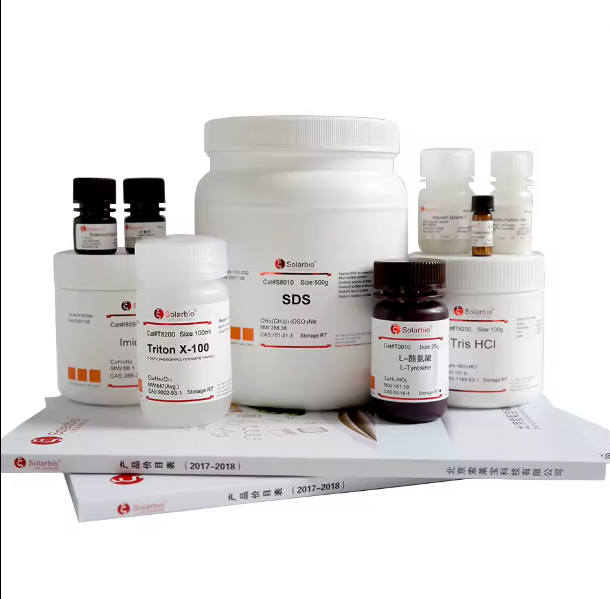
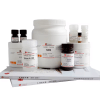
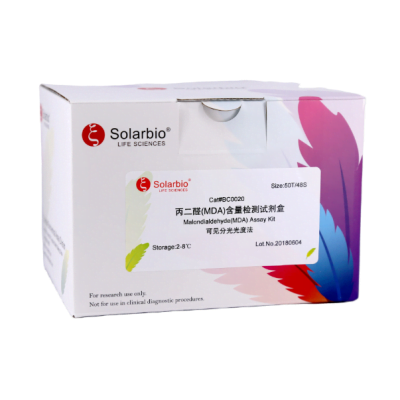
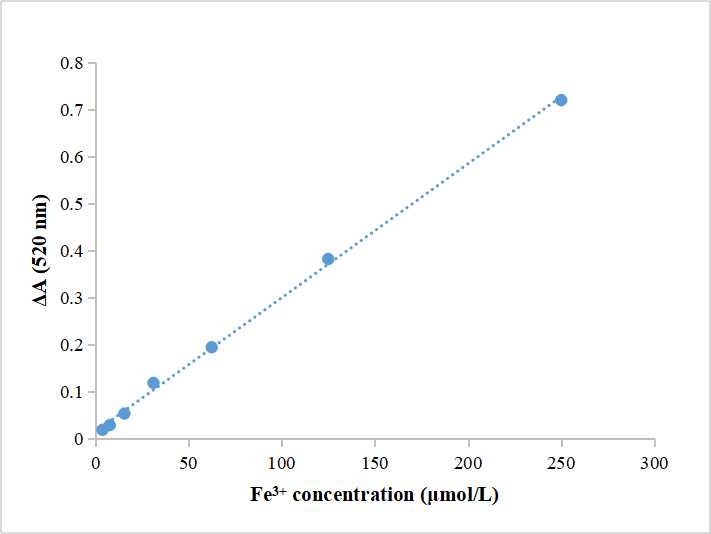
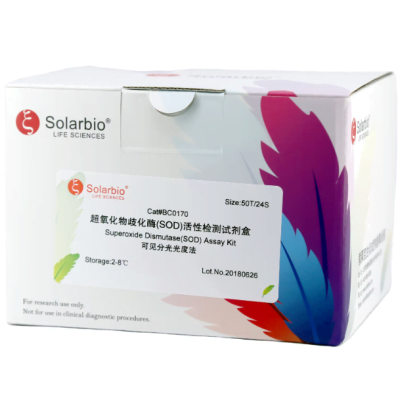
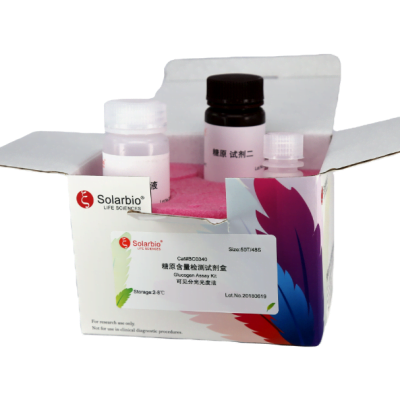
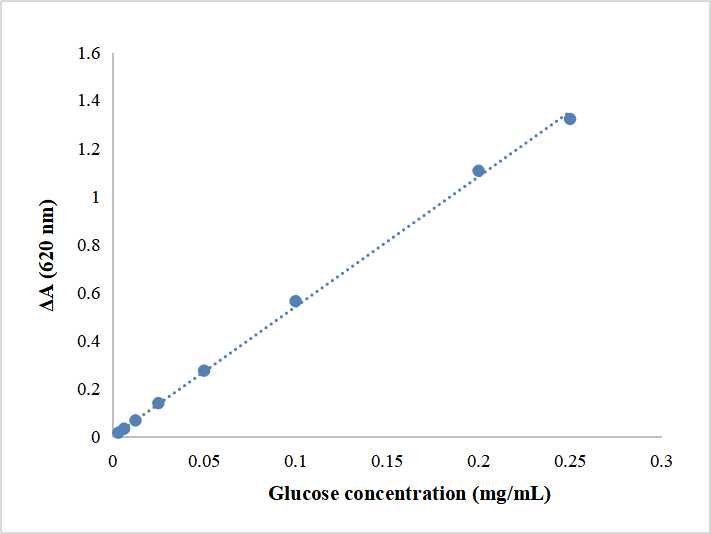
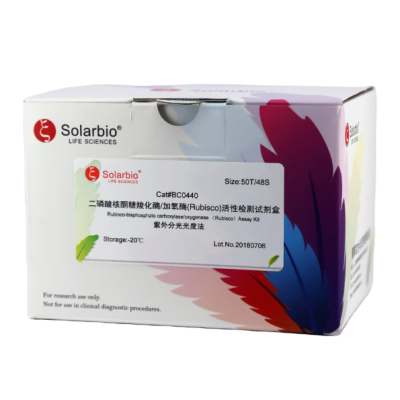
Recenzije
Još nema recenzija.